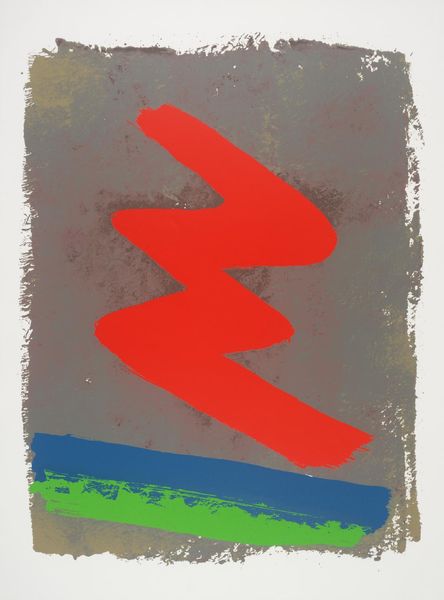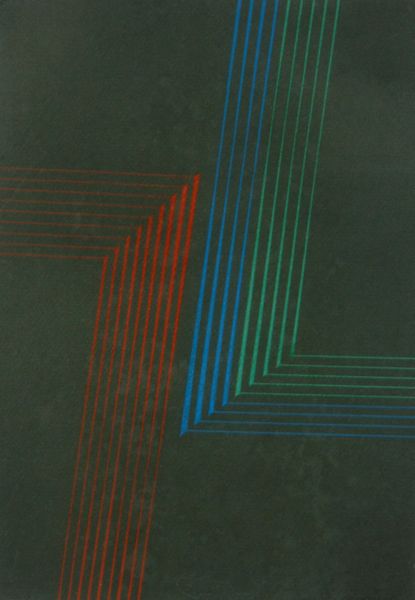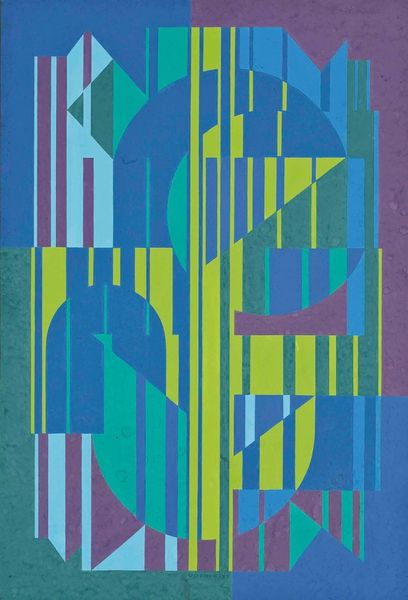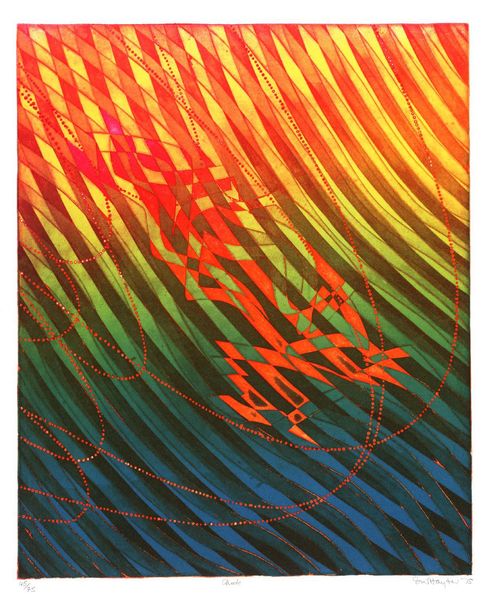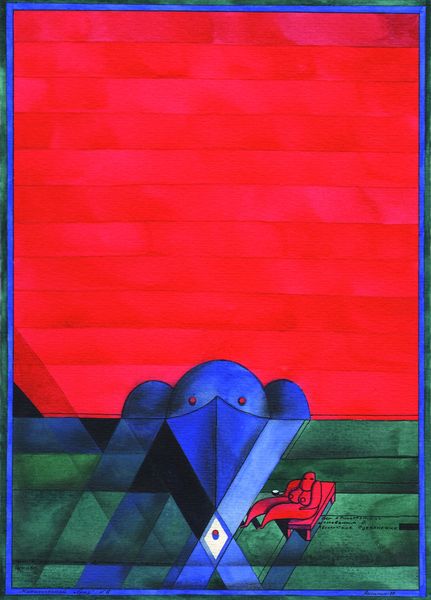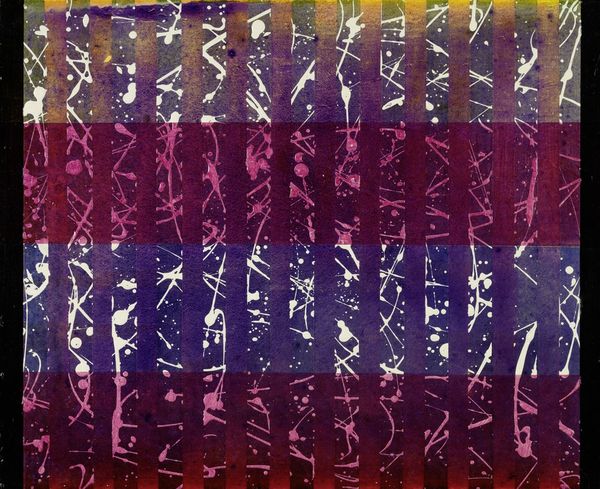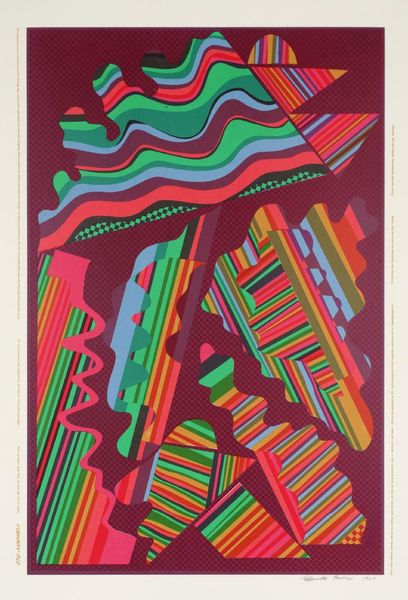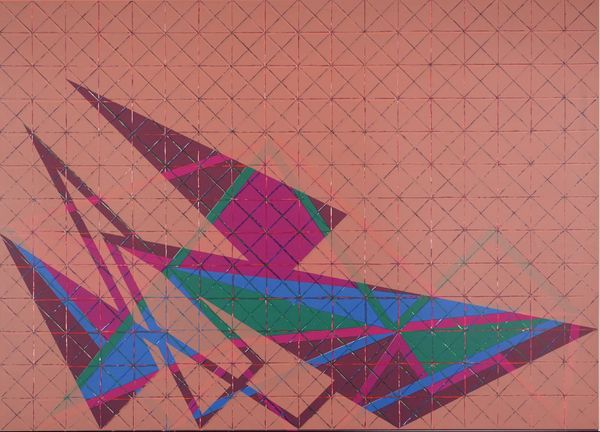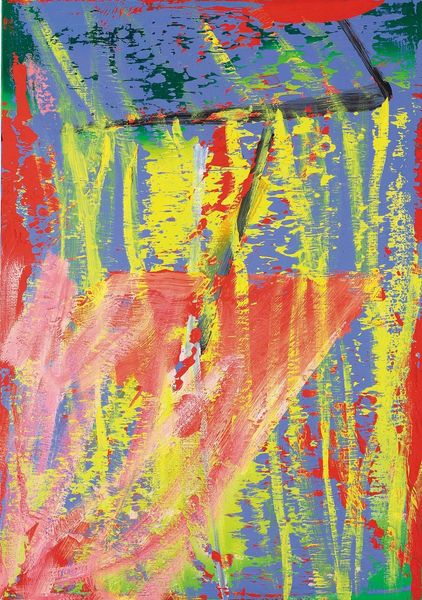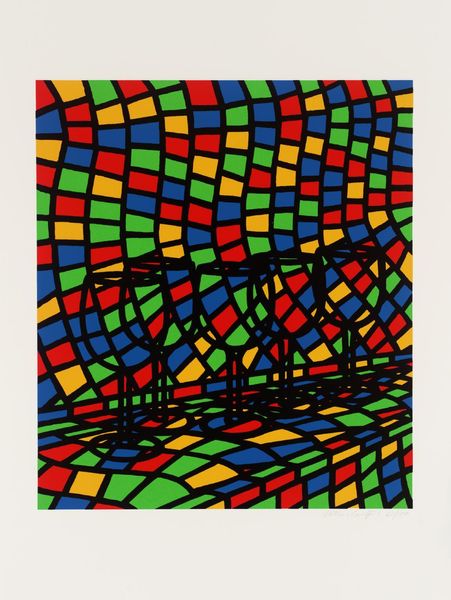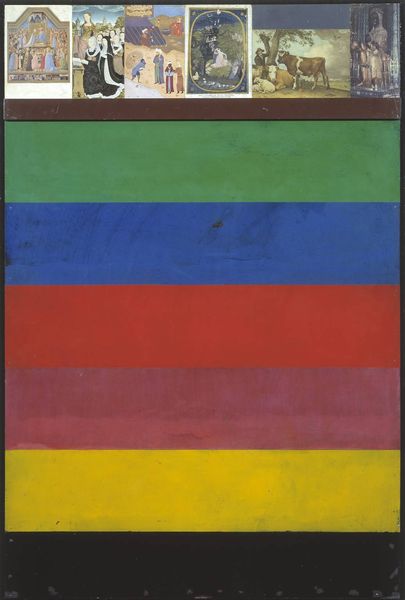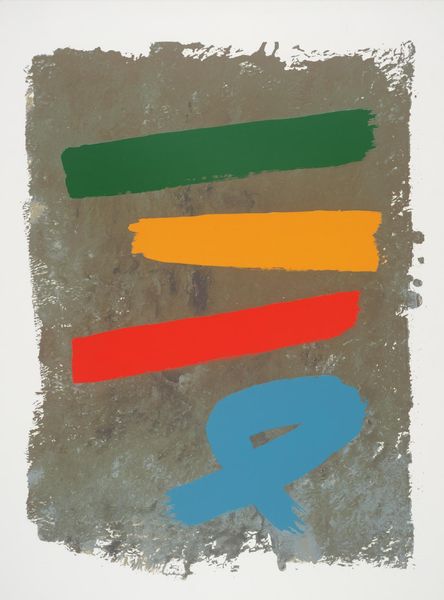
acrylic-paint
#
geometric composition
#
acrylic-paint
#
form
#
geometric
#
abstraction
#
line
#
modernism
Copyright: Oleksandr Aksinin,Fair Use
Curator: Right away, I am struck by the force of this abstract composition—such vibrant fields of red and green, almost like clashing tectonic plates, pinned down with an overlaid geometric structure. Editor: Yes, the colors are intense. And did you notice the tiny inscription across the top— barely legible, almost as if it were a coded message laid on the canvas? Curator: A coded message! Very intriguing indeed. What exactly are we looking at here? Editor: This is Oleksandr Aksinin’s “T Figure,” created in 1978 using acrylic paint. At first glance, it appears like a flattened cube, a "T" of dark lines against fields of bright acrylic color, an exercise in spatial geometry, or even a blueprint. Curator: Aksinin had been working since the 1960s, but was only officially recognized in Ukraine after its independence in 1991. I see within the stark shapes, traces of Ukrainian Constructivism and Suprematism... echoes of Malevich and Tatlin, though more intimately scaled. There’s a quiet, almost melancholy feeling conveyed, despite the intense hues. It whispers, it doesn’t shout. Editor: Absolutely. Aksinin worked during the Soviet era, when abstract art was often suppressed, when cultural production needed to be critically examined against what was possible, when art could be quietly subversive, using its shapes and colors to create safe spaces. In this light, these rigid lines take on a deeper meaning for me—perhaps even barriers to control or critique. Curator: Control and critique. Fascinating… So you think he turned simple geometry into a quiet form of protest? Editor: Perhaps a commentary, a way to push back without overtly challenging authority. The structure is at once imposing, as though dictating the space, and yet seemingly floating… a visual paradox of repression and latent resistance. Curator: Thank you for the illuminating discussion. I was so focused on identifying symbolic forms that it escaped my consideration that in those oppressive circumstances form was the symbol. Editor: Thank you. I had come to this work from the perspective of its socio-political history and your reminder that forms too speak to symbols will invite me to delve deeper into what symbols in modern form are saying to contemporary minds.
Comments
No comments
Be the first to comment and join the conversation on the ultimate creative platform.
